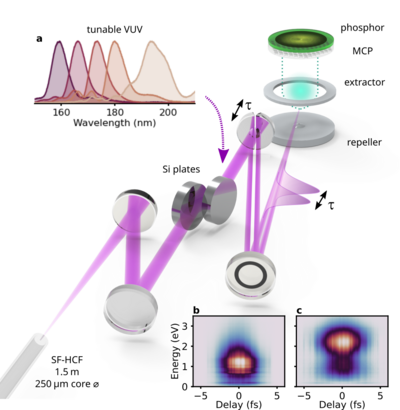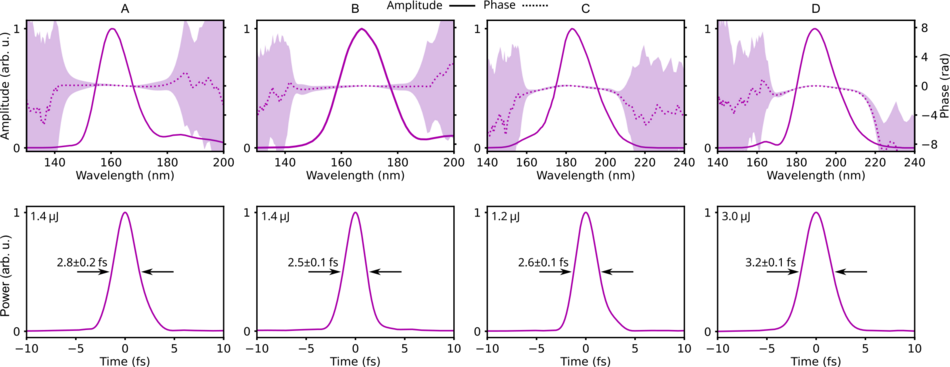Few-femtosecond long pulses tunable across the ultraviolet (UV) are a holy grail of contemporary laser science. As most of the materials have electronic resonances in the deep- and vacuum-UV (VUV), such pulses enable the study of valence electron dynamics at an unprecedented temporal resolution. However, due to the Kramers-Kronig relation, the vicinity of resonances intrinsically invokes high material dispersion, which makes the handling and measurement of such pulses extremely difficult.
Recently, John C. Travers at the Heriot-Watt University, UK, developed a technique, which is ideal for the generation of µJ-level tunable few-fs UV pulses showing a wide tunability down to 110 nm. It uses resonant dispersive wave (RDW) emission following soliton self-compression in waveguides [1]. This technique requires very high quality hollow waveguides, which became first available by stretching flexible capillaries, an invention of the last author of the current MBI-work together with Peter Simon at the Institut für Nanophotonik Göttingen e.V., Germany [2].
Thanks to the continuous development of Travers' group, now the RDW technique is used for studies in a wide spectral range down to the deep-UV (~230 nm). However, shorter wavelengths of the VUV (100-200 nm) have not been explored yet, due to the immense technical difficulties connected to the high absorption and excessive dispersion of the materials in this regime.
Now scientists at the Max Born Institute, Berlin, Germany successfully extended the usability of the RDW technique to the VUV spectral range. They fully characterized few-fs pulses tuned between 160 and 190 nm by a technique that they call electron FROG. It is a variant of frequency-resolved optical gating (FROG) using two-photon ionization of noble gases as the nonlinearity. During the measurement, the kinetic energy spectrum of the photoelectrons is recorded as a function of the delay between two pulse replicas ionizing the gas target (see Fig. 1).

